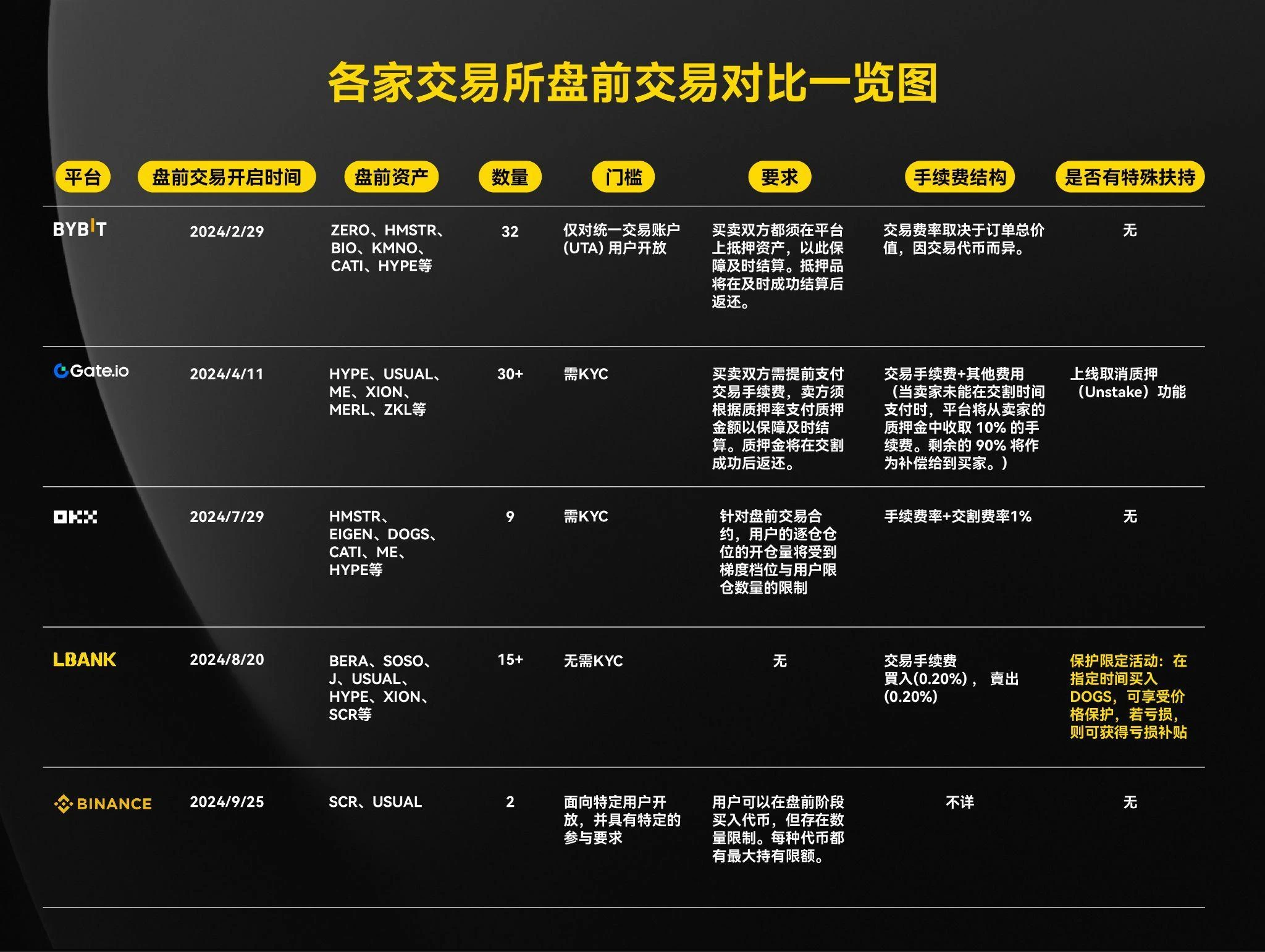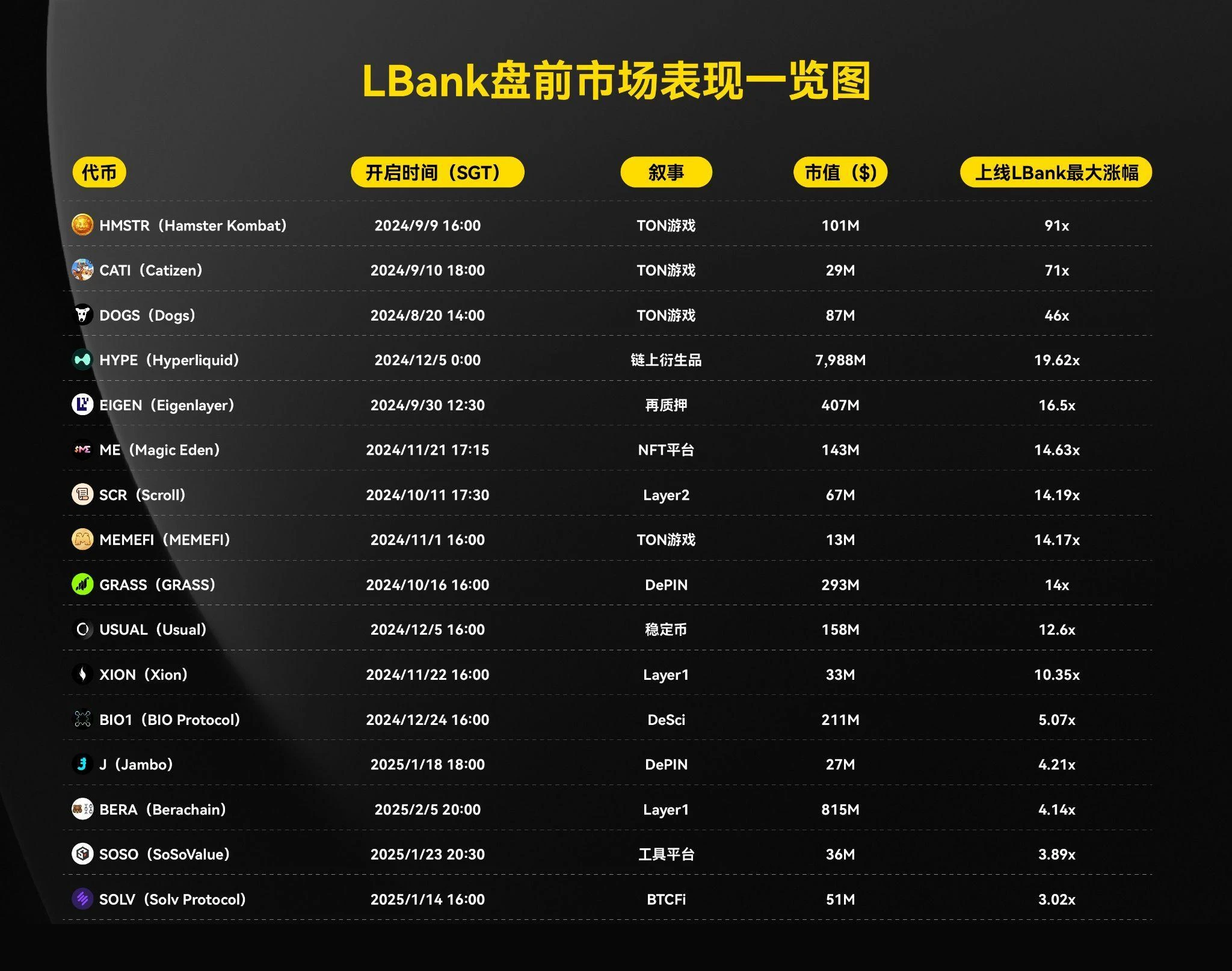If I could have established a position before ME was released... Such exclamations can be seen everywhere in the crypto market. When a high-quality project is officially released, the best time to enter the market has often been missed.
Nowadays, PVP can be seen everywhere in the crypto market, and early layout often means greater profit space. Data shows that star projects such as ME and HYPE have already shown amazing growth potential in the pre-market, bringing considerable returns to early participants. This strong demand for early layout of high-quality projects has given rise to the innovative market form of pre-market trading.
By deeply analyzing the underlying logic behind the rise of pre-market trading, we can find three key driving factors: first, early investors and project parties need a liquidity outlet to realize their investment returns; second, new investors are eager to participate in the project at the start-up stage and share in future growth dividends. Most importantly, the market urgently needs an effective price discovery mechanism to provide a valuation anchor for the official issuance of tokens.
The evolution and reconstruction of the pre-market
The development of the pre-market trading market is essentially a process of continuous optimization of the market structure. This process not only reflects the changes in the market participants demand for trading mechanisms, but also shows the continuous improvement of the crypto market infrastructure. Looking back at the development trajectory of pre-market trading, we can clearly see the evolution of three important stages:
Traditional OTC trading: mainly relies on middlemen for matchmaking. Although this model meets the basic needs of early users, it seriously restricts the healthy development of the market due to serious information asymmetry and difficulty in controlling the credit risk of middlemen.
DEX pre-market trading: DEX platforms represented by AEVO and Whales Market have achieved trustless trading through smart contracts, solving the credit risk problem. However, shortcomings such as dispersed liquidity and complex operations have also limited its development space.
Centralized exchange pre-market trading: It provides better liquidity through a centralized order matching system, and is equipped with a professional risk control system to significantly reduce market risks. The standardized trading process also brings a better experience to users.
Although these three models still coexist, centralized exchanges are becoming the dominant force in the pre-market trading market due to their inherent advantages in market organization efficiency.
Diversified centralized exchange pre-market trading ecosystem
The current pre-market of centralized exchanges is showing a trend of large-scale development. According to market data, the layout of mainstream exchanges has its own characteristics, and this differentiated layout reflects the different strategic positioning of exchanges in the pre-market.

By analyzing the pre-market trading volume of major exchanges, we can observe several key trends:
Increased project diversity
The types of projects in the pre-market are becoming increasingly diverse, from Layer 1 to DeFi tools, from on-chain derivatives to re-pledge projects, providing investors with a wider range of choices. Take LBank as an example, among its 15+ pre-market projects, there are many representative projects from different tracks such as BERA, SOLV, HYPE, and EIGEN. This diversified layout helps to disperse risks and improve the overall stability of the market.
Differentiated entry strategies
Binances pre-market trading is only open to specific users, Bybit chooses to open pre-market trading permissions only to UTA users, and Gate and OKX adopt a strict KYC access mechanism. Although this approach limits the participating groups, it helps maintain the stability of brand reputation.
Platforms such as LBank have adopted a more inclusive access strategy and removed KYC requirements. This flexible access mechanism not only ensures market security, but also provides opportunities for a wider range of user groups to participate. Different access strategies essentially reflect each exchanges understanding of market positioning and risk management.
Market strategy differentiation
Head exchanges such as Binance and Bybit rely on their brand effect and financial advantages to maintain a high entry threshold, which helps maintain the platforms professional image and market stability. From the data, it can be seen that Binance has strict standards for pre-market asset listings. As of February 0, only 2 pre-market assets (SCR and USUAL) are currently online, and the transaction scale is strictly limited, limiting the maximum position of each currency; Bybit is slightly more relaxed than the former in terms of pre-market trading, and has launched 32 assets including ZERO, HMSTR, CATI, and HYPE, but controls the participation threshold by requiring both buyers and sellers to pledge assets on the platform.
At the same time, emerging exchanges have shown a more flexible competitive mindset and increased their market share through innovative user incentive mechanisms. For example, the price protection campaign launched by LBank in the DOGS project is a typical case: by providing users with protection against potential declines, the psychological threshold for user participation is lowered. This strategy of giving up profits in exchange for market share is significantly attractive in the current highly competitive pre-market.
It is worth noting that this price subsidy mechanism actually reflects the market competition strategy of second-tier exchanges that pay more attention to user experience and actual benefits when facing market competition, and gain long-term market share by sacrificing short-term profits.
In the practice of these differentiated competitive strategies, multiple pre-market projects launched by LBank have shown good market performance. Data shows that the platform has successfully deployed multiple high-growth projects:
HMSTR and CATI of the TON gaming track achieved an astonishing increase of 91 times and 71 times respectively;
The on-chain derivatives project HYPE also achieved an excellent performance of 19.62 times;
EIGEN in the re-staking field also achieved a 16.49-fold growth.
In addition, projects such as NFT platform ME (14.625 times) and Layer 2 project SCR (14.18 times) also showed strong market performance.

In the fierce competition among centralized exchanges, LBank has performed well in recent years and has grown rapidly. Especially in the Meme track, at the beginning of 2025, with its keen market sense, LBank successfully deployed popular Meme tokens such as TST and TRUMP. These projects achieved impressive returns of 68.42 times and 56.54 times respectively, further consolidating the platform as the preferred platform for investors to obtain Beta returns. This successful experience in the Meme track has also been successfully replicated to other tracks. Through the strategic layout of diversified pre-market market assets, LBank has always maintained a prudent balance in the project structure, which not only provides users with more abundant investment options, but also effectively disperses investment risks.
Pre-market Evolution
As an unconventional trading method, pre-market trading has surpassed the platform restrictions and has become an important part of the collective psychology of the entire crypto market. Looking ahead, with the gradual involvement of large institutions and the increasingly improved regulatory environment, this market will continue to iterate in terms of transparency, liquidity and risk management, and develop rapidly, gradually developing into a more mature and rational value discovery mechanism.
In this rapidly developing market, the ability to keenly grasp opportunities is becoming the core competitiveness of centralized exchanges. Recently, after Binance announced the launch of the Solayer project, LBank responded quickly and took the lead in launching pre-market trading for the project and launched a limited price protection activity. This strategic layout of quickly responding to the market and seizing investment opportunities has enabled LBank to establish its own advantages in the ever-changing crypto market.
What is certain is that exchanges like LBank that focus on user experience, risk control, and have a keen sense of the market will surely occupy an important position in future market competition. For investors, keeping an open mind, making rational judgments, choosing the right platform, and closely following the structural changes in the market will become the key to obtaining excess returns.










